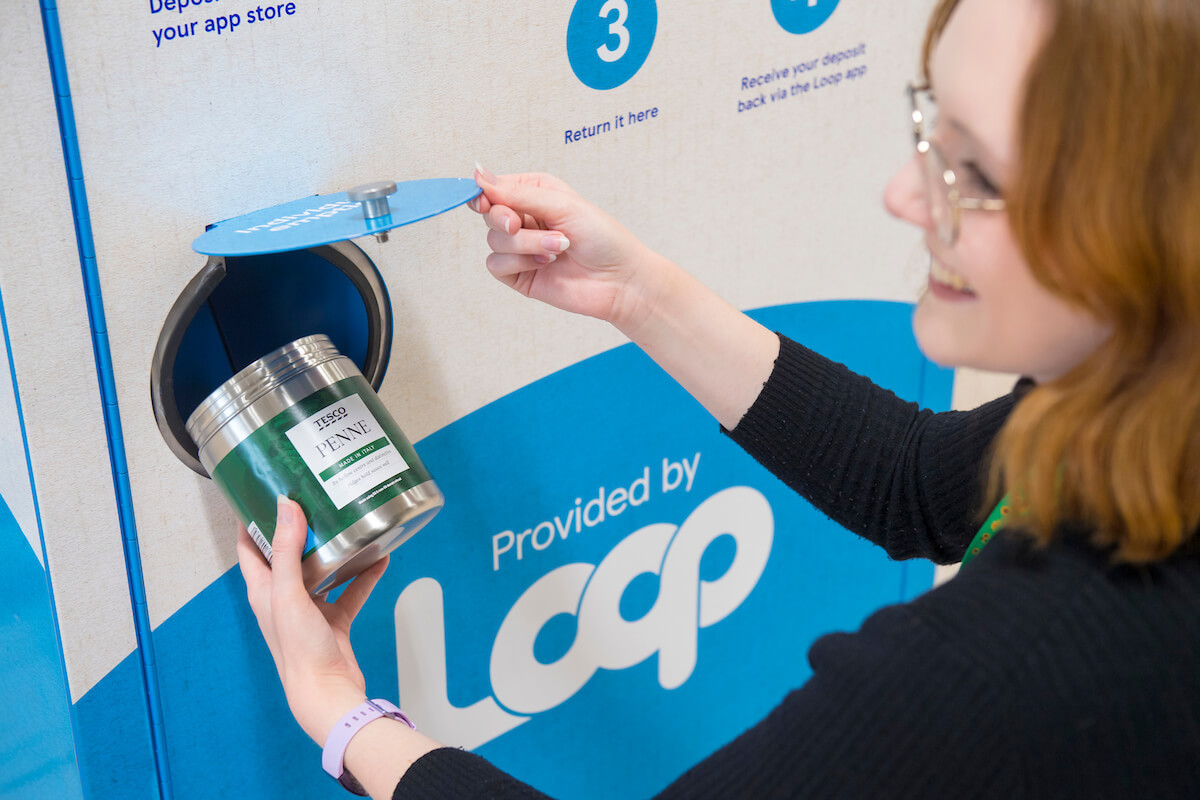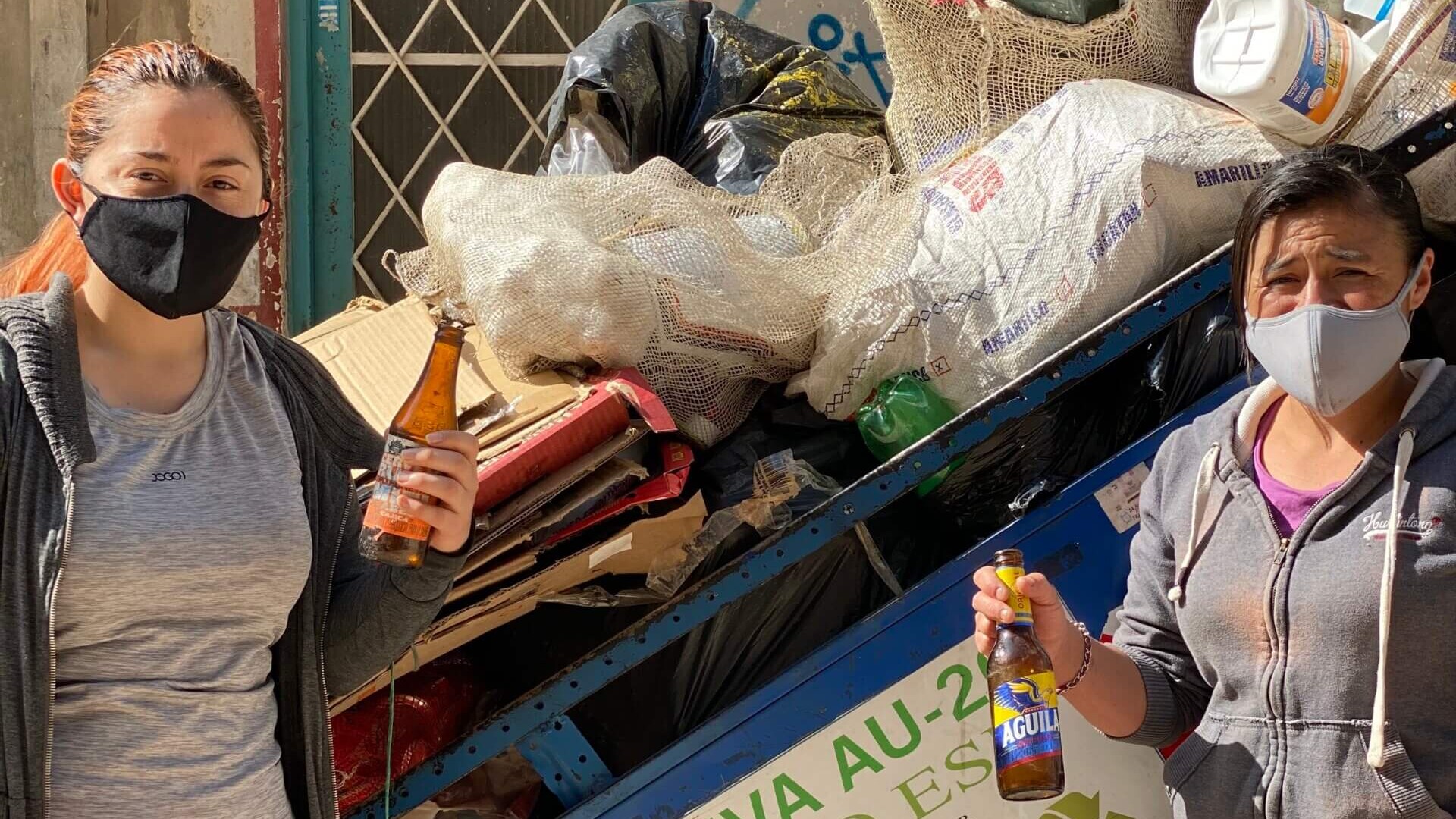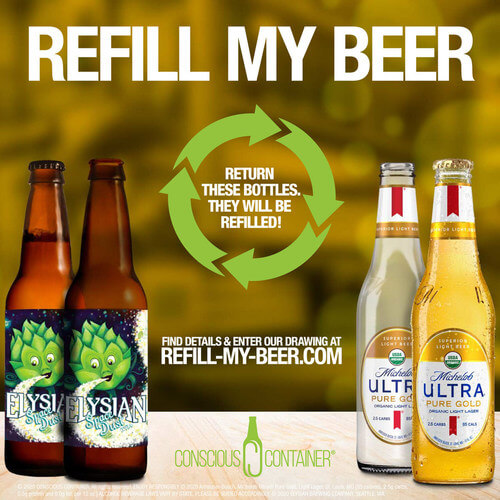Returnable Glass Bottles (RGBs) were once the norm. However, from the second half of the 20th century, single-use plastic bottles and aluminium cans were considered to be more lightweight, resistant to breakage and therefore superior.
Triggered by sustainability concerns, returnable formats are having a resurgence.
In the UK, the ‘milkman model’ gained traction during the pandemic and is gradually expanding into other categories. TerraCycle’s Loop platform – currently available in the United States, United Kingdom, Japan and France – is working alongside major brands and retailers to enable a convenient, scalable and accessible reuse solution for consumer products. In France, the idea of a ‘consigne’ system (which allowed consumers to return empty bottles to retailers and was common in France until the 1970’s) has been recently reactivated by a group of ten French organisations, involving 700 producers and reusing 1.4 million bottles last year.
Major Drinks companies are committed to returnable packaging. Coca-Cola announced that by 2030 they would attempt to sell 25% of their beverages in returnable and refillable bottles, both of glass and PET. Coca-Cola pilot programmes are in place in countries such as France (where a new ‘universal’ 250ml returnable glass bottle was introduced in 2022 in restaurants, bars or cafes), USA and Sri Lanka.
Over a third of AB Inbev’s volume is already sold in returnable packaging and the company aims to identify further initiatives to “promote the recovery and reuse of packaging in its original form”. Projects such as Green Mining in Brazil or Nomo Waste in Colombia, create infrastructure and incentives for glass bottle collection, and to secure further income to waste collectors.
“According to French environmental agency Ademe, reusing glass bottles can reduce water use by 51%, energy use by 79% and the impact on global warming by 77%. ”
Why returnable and refillable bottles?
Circularity:
The appeal of the returnable model is undoubtedly the fact that it is truly circular and conserves limited resources. According to French environmental agency Ademe, reusing glass bottles can reduce water use by 51%, energy use by 79% and the impact on global warming by 77%. Some factors can enhance the environmental benefits of returnable and reusable packaging: using recycled content during bottle production; having as many reusability cycles as possible; recycling at the product end-stage; reducing impact from transportation (through lighter weight, logistics and type of transportation); and enabling increasing returnability through Deposit Return Schemes.
Consumer interest:
Consumers are gradually embracing circularity and reusability. According to a 2022 UK Deloitte/YouGov survey, 53% of survey respondents repaired or fixed an item instead of replacing with a brand-new equivalent, and 40% have bought second-hand or refurbished goods. A report recently released to mark World Refill Day, shows 53% of survey respondents said they were more likely to buy from a brand that offered products in prefilled returnable packaging, rising to 84% among those that had previously bought products in returnable packaging.
Compliance:
Countries will implement more stringent sustainability regulation, and packaging reusability is expected to become more prevalent. For example, France will see the implementation of a wider glass bottle return scheme by 2025, aiming at ensure a minimum reuse rate of 10% for glass packaging by 2027.

What are some of the challenges?
Infrastructure:
Setting up glass bottle collection schemes require strong commitment from governments, manufacturers, retailers and individuals. For manufacturers, ‘once-off’ CAPEX to set up and equip an RGB operation needs to address multiple steps such as receiving bottles, sorting, cleaning, filling and labelling. Building new reuse models initially adds cost into the supply chain (i.e. the investment in setting up new systems). But in the long term, reuse can prove more economically viable at scale, which will continue to improve as it becomes more mainstream.
Inconvenience:
Returning containers brings additional inconvenient steps to the consumer journey – in particular in traditional models where packaging is manually returned to retail recycling points or through reverse vending machines. The introduction of Deposit Return Schemes in markets such as the UK will help train individuals to keep and return containers. Digital collection schemes allow consumers for quicker returns through more flexibility, and by transferring the deposit to digital wallets. Furthermore, making returnable bottles less expensive than single-use can make the effort more appealing and less onerous to consumers. According to a recent survey, 50% of respondents said a discount would encourage them to make an initial purchase and to return packaging after use.
Damage Prevention:
In theory, each bottle can be used by anything from 20 to 50 times, until it reaches the point of breaking. The extension of the ‘bottle fleet’ involves damage prevention, in particular during transportation and cleaning, so that the bottles can remain in circulation for longer.
Packaging Design:
Reusable Glass Bottles weight cannot be too light (which impacts durability) nor too heavy (which impacts costs). Different bottle colours and shapes – which may be dictated by brands but also by regional appellations in the case of wines – can make supply management particularly challenging. ‘Universal bottles’ deployed across the portfolio (such as the PET bottles adopted by Coca-Cola in Latin America) allow for flexibility and more effective sorting. Labels fixed with a strong adhesive may be difficult to remove and remain on the glass throughout the cleaning and sorting – as a consequence, packaging can be misidentified, rejected and not be recycled.

What are the opportunities for the brands?
Fit the sustainability story into the brand narrative. In the US, AB Inbev’s Michelob Ultra Pure Gold partnered with Conscious Container to incentivise bottle returnability. A QR code and app provided consumers with insight into how much packaging they were preventing from entering landfill and oceans through their choices.
Make returnable packaging more practical and exciting. Drink Works and the Corona team in Europe developed beautiful and ergonomic crates using maritime plastic waste, making returnability more attractive, reinforcing sustainability credentials and capitalising on the brand story.
Create awareness and educate consumers. Embrace the fact that the ‘scuff’ is the evidence of returnability and circularity. Ultimately, the more scuff the better.
Offer incentives through engagement and gamification. Use ‘fun’ tools such as Hellmann’s partnership with Nintendo’s Animal Crossing, which informed and inspired people to make the most of leftover food at Christmas and give back to those in need. Consider how consumers can better understand what returnable packaging entails, engaging and incentivising them to return bottles.
Promote the reduction of packaging complexity. When developing new packaging, consider the impact on reusability and a possible fit across different SKUs. Ensure bottle finishes and adhesive strength do not hinder their reuse.

In Summary
It’s just a matter of time. Returnable/refillable bottle formats are circular, carbon efficient solutions, and are expected to become more prevalent over the next decade. Adopting such models are critical to move from being a ‘throwaway culture’ and kickstart a true circular economy.
Major efforts will be required from all stakeholders involved. Overtime, regulatory measures will be put in place and companies and consumers will need to comply.
Businesses who support, advocate and embrace it earlier on can be more closely associated with the model, capitalise on it and add true sustainability values to their brands.
https://www.coca-colacompany.com/reports/business-and-sustainability-report
https://www.ab-inbev.com/sustainability/circular-packaging/
https://www.foodpackagingforum.org/news/zwe-report-identifies-climate-benefits-of-reusable-packaging
https://www2.deloitte.com/uk/en/pages/consumer-business/articles/sustainable-consumer.html
https://www.foodpackagingforum.org/news/france-to-launch-glass-deposit-system